-
Posts
778 -
Joined
-
Last visited
Content Type
Profiles
Forums
Gallery
Events
Posts posted by woodrat
-
-
-
I am happy to remove the word "dead". The rest I leave to the moderator. This is an open forum and disagreement is allowed as long as it is polite so maybe dead wrong is a poor choice of words.
Woodrat
- BLACK VIKING, davyboy, Baker and 3 others
-
 6
6
-
On the undecked starboard side the carlings are installed
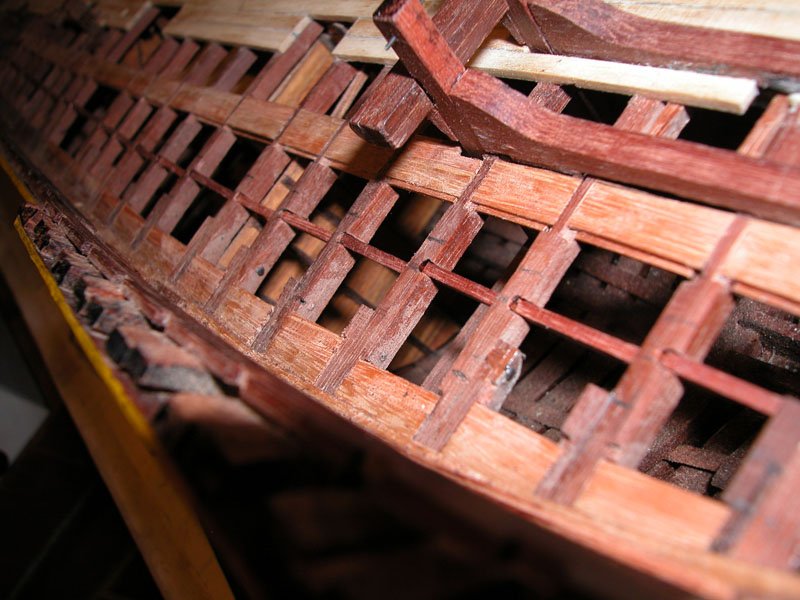
The carlings support the ledges which in turn support the deck planking
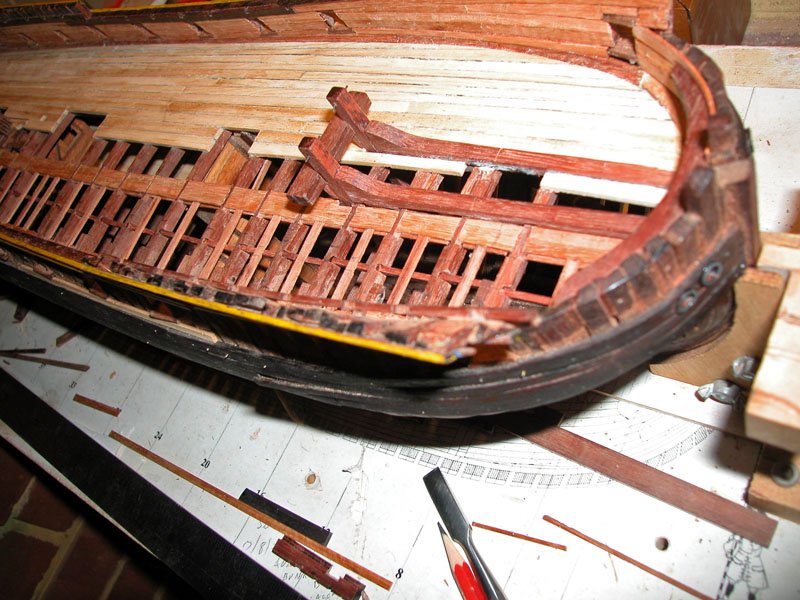
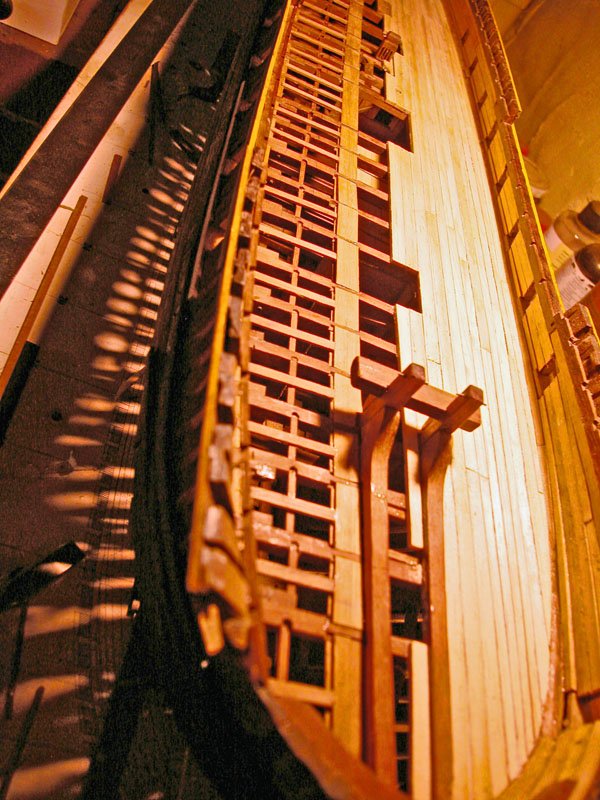
This completes main deck framing. Now for deck furniture.
Dick
- KARAVOKIRIS, davyboy, mtaylor and 4 others
-
 7
7
-
18 hours ago, tartane said:
Ships with latin sails never have crow's nests,
18 hours ago, tartane said:In all the images you show from antiquity, I only see square-rigged ships. To make these drawings more vivid, the draughtsmen used sails that were not quite quadrangular, and therefore they look like Latin sails. But they were quadrangular.
I am sorry Tartane but you are wrong on both counts. There is ample iconographic evidence from the Mediterranean middle ages for lateen sails since at least the seventh century CE and there were indeed observation baskets just as Steven has modelled them. The baskets were positioned aft of the masthead so as not to foul the yard when going about.
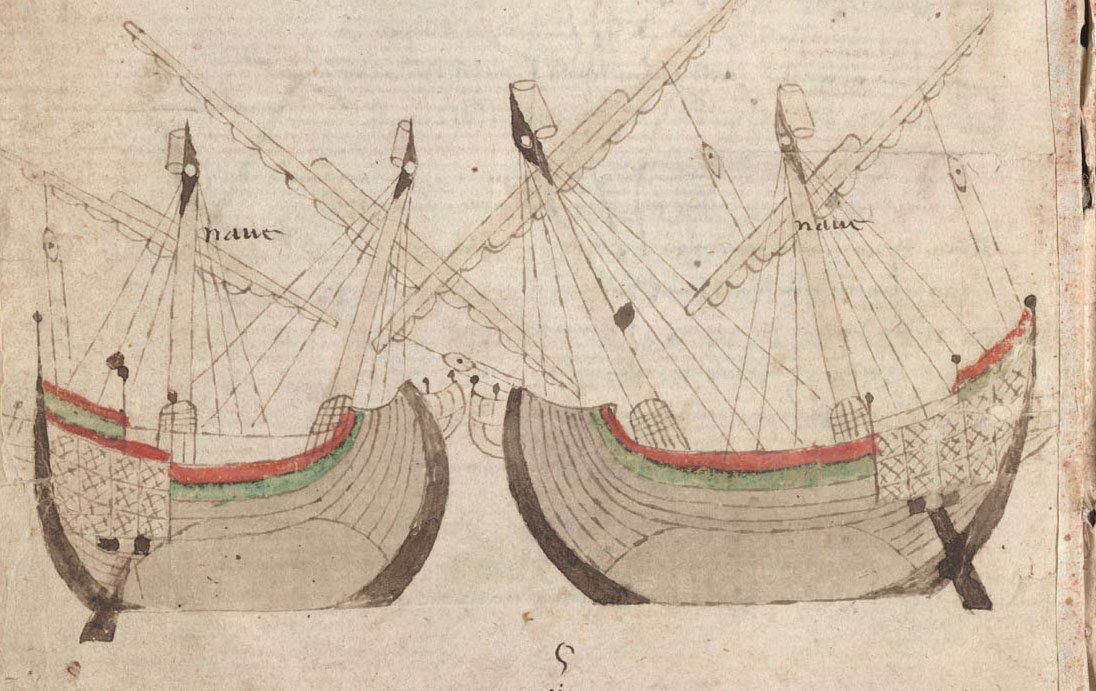
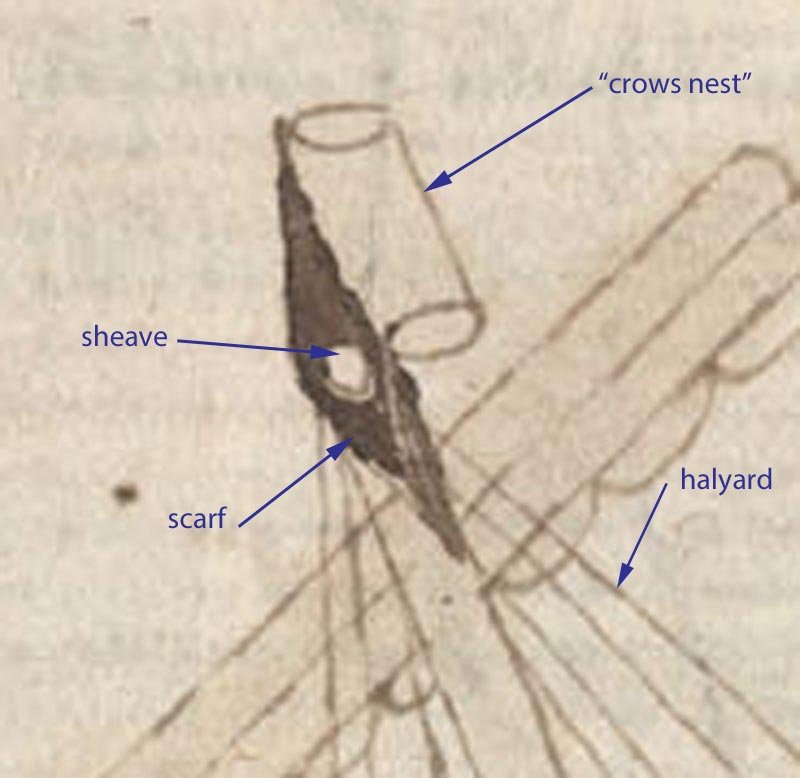
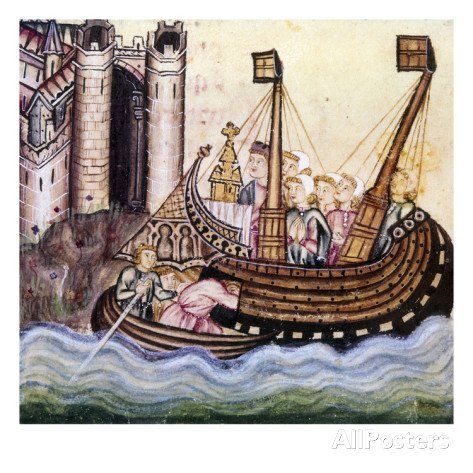 18 hours ago, tartane said:
18 hours ago, tartane said:Also, latin-rigged ships did not have rope ladders and stays, which also had to do with the conversion of the sails and rods.
Beg to differ. They certainly didnt have ratlines till much later.
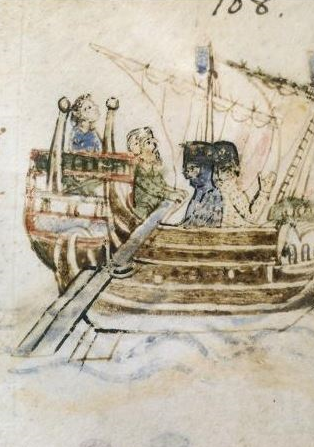
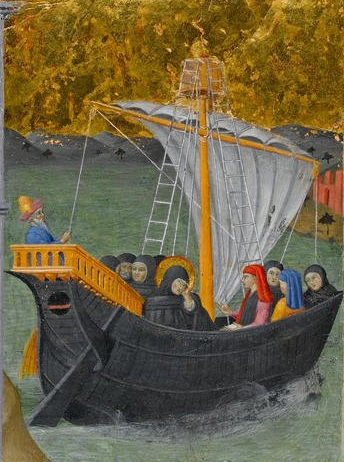
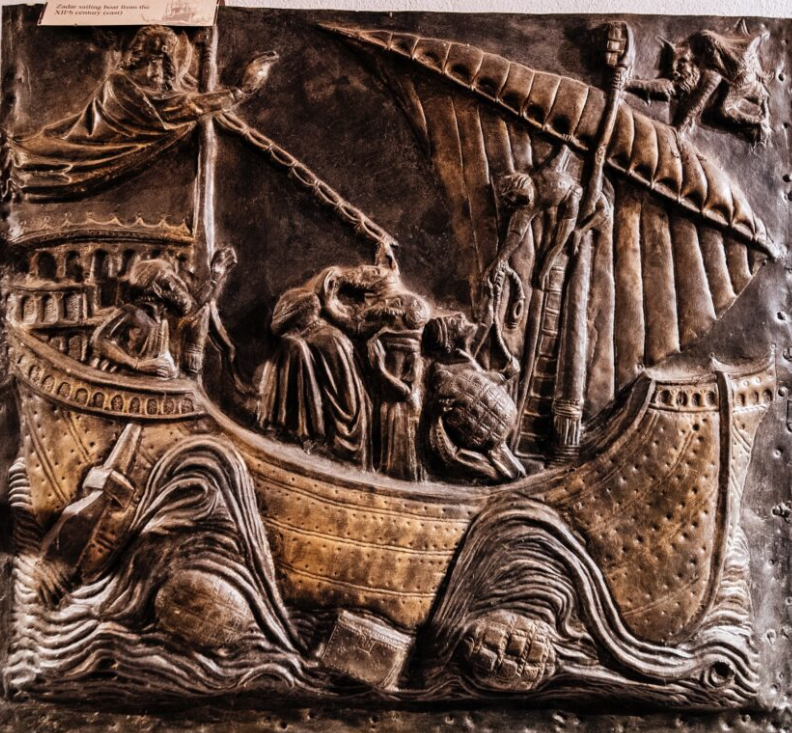
Cheers
Dick the Woodrat
- druxey, GrandpaPhil, Glen McGuire and 2 others
-
 5
5
-
-
I am really not happy with the octopus. There is no iconographic evidence for its use on galleys or any other ship, so it is gone. I have gone instead for a more austere look. I am happy with the figurehead. Prof Wachsmann has published his thesis that these figureheads reprsent birds' heads and that may be so in most cases but in the case of the Tragana ship the backward curved protuberances on the "beak" resemble no bird I know but would be consistent with a crocodile.
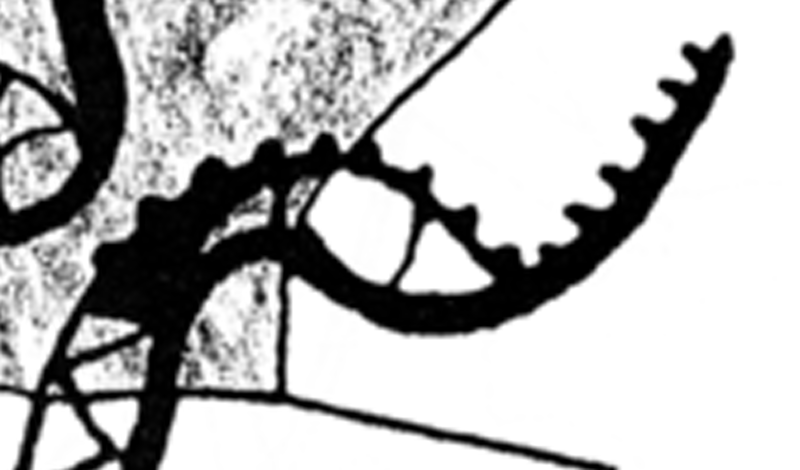
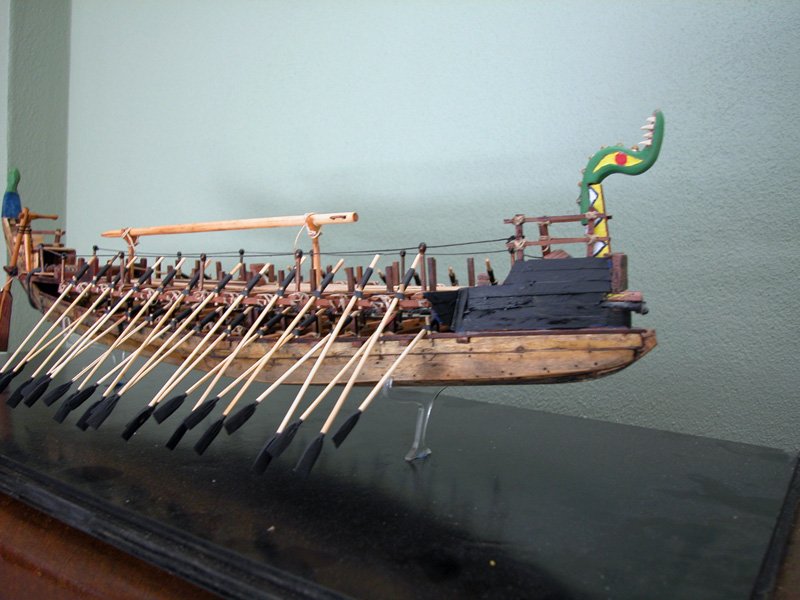
Dick
-
Ian. I dont know this block. Where did you come across it? I dont know of any archaeology to back its use in greek or roman craft? Happy to learn more.
Dick
- mtaylor and Glen McGuire
-
 2
2
-
3 hours ago, Louie da fly said:
As far as what the rungs should be made of, I know you used wood, and that would probably be easier to make than rope ones, but I'm still not certain which way I'm going to go
I actually used rope rungs but either way would be OK. I did use wood rungs on my carrack. The lower ends of the ladder are attached to rings in the deck.
Dick
- Glen McGuire, Louie da fly and mtaylor
-
 2
2
-
 1
1
-
Just a couple of points about Jacob's ladders in latin ships. Make sure the ladder doesnt foul the yard or its tackle on going about. On my round ship I positioned the rope ladder (with rope rungs) side on to the mast. Anyone who has seen circus performers use a rope ladder knows that they clamber up the side of the ladder. This minimises "bellying out" of the ladder which would be worse if the ladder were climbed face on.
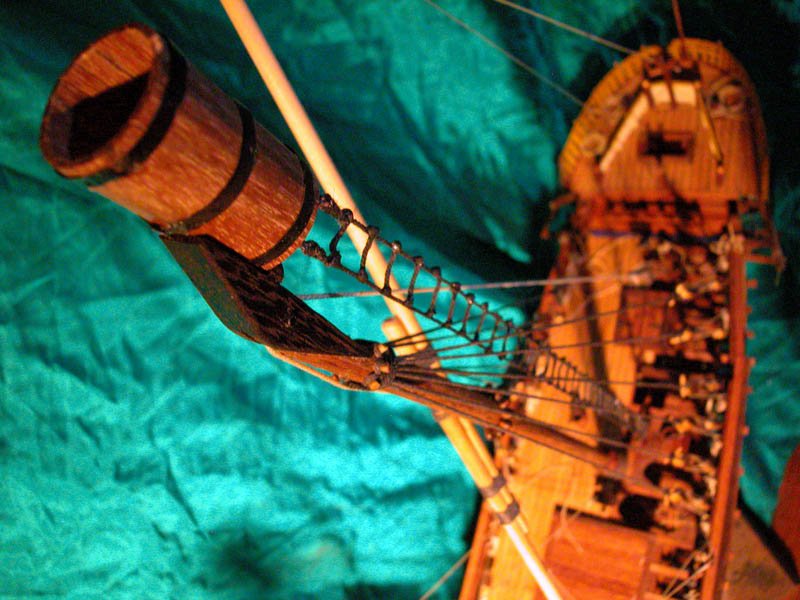
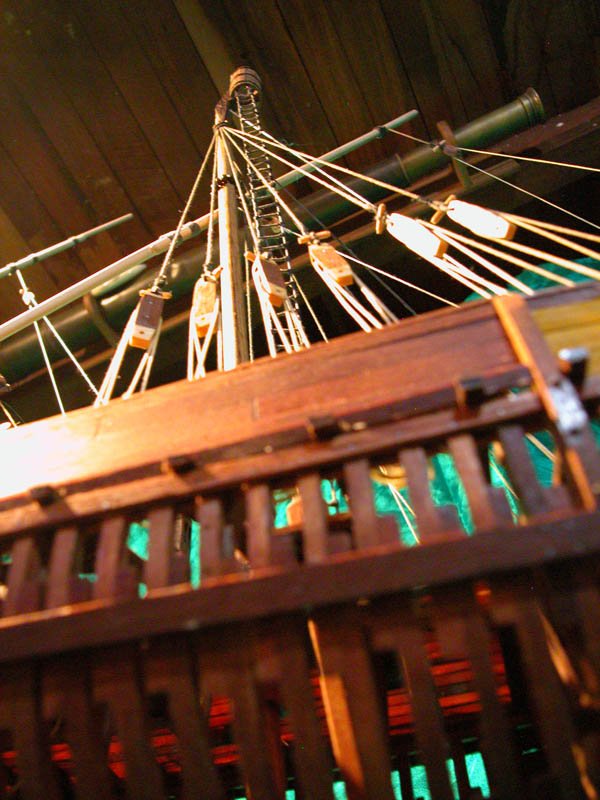
Cheers
Dick
- GrandpaPhil, Ian_Grant, Thukydides and 4 others
-
 7
7
-
The main deck completed to the midline and the bowsprit step is temporarily installed
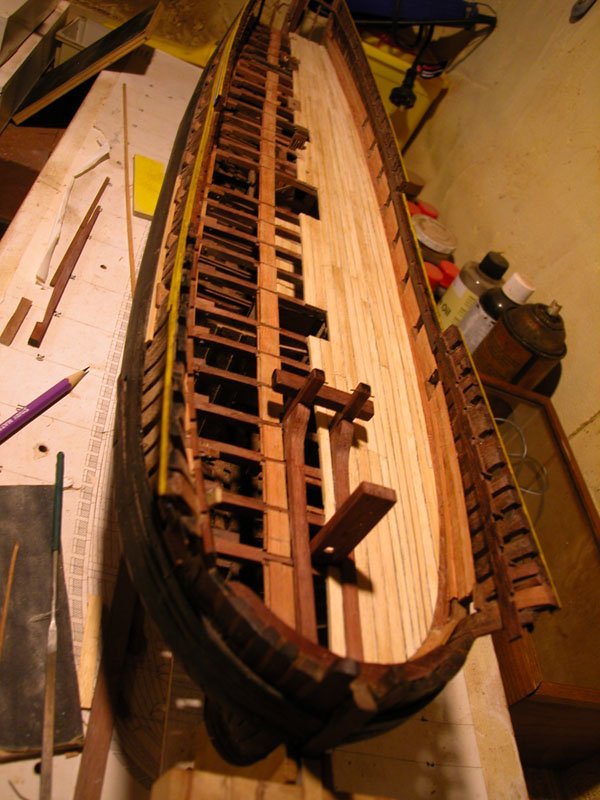
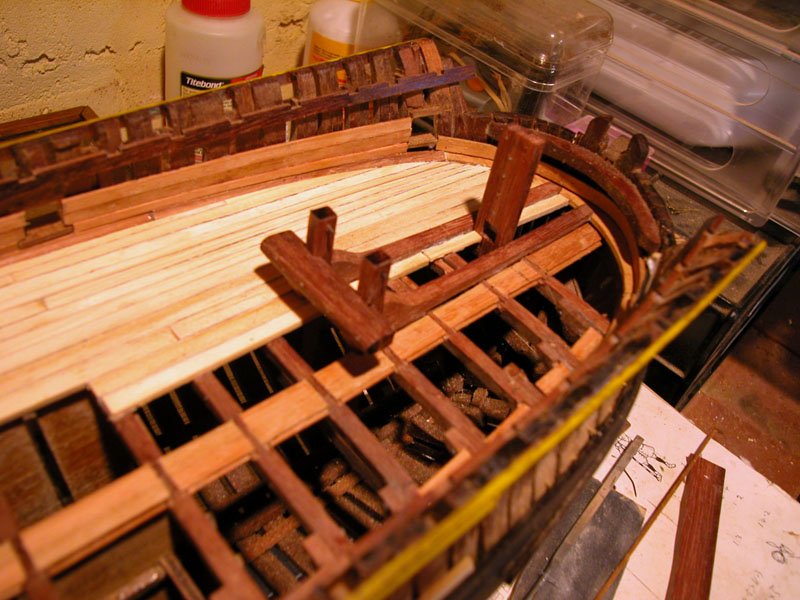
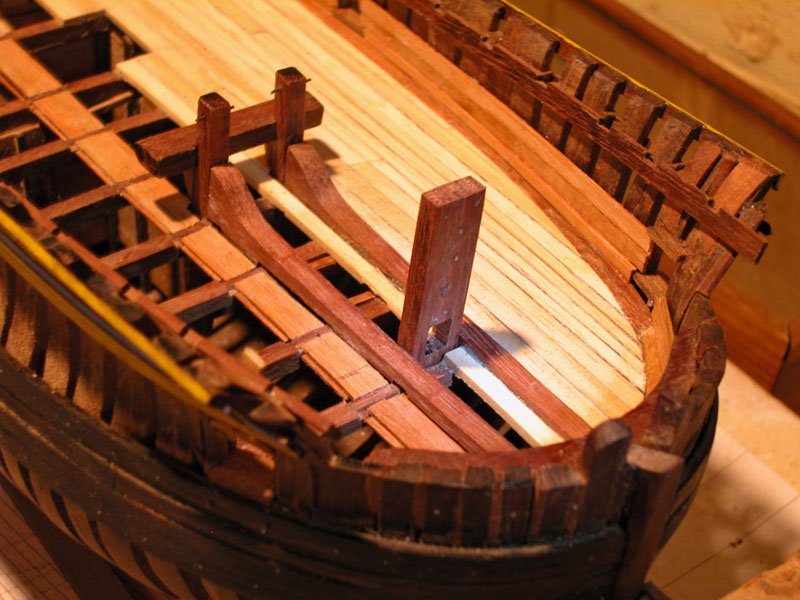
Dick
- Mike Y, CiscoH, JacquesCousteau and 7 others
-
 10
10
-
This is just another way to manage a tiller but this time from a distance. It is a rascona from the Po river in italy as depicted by Admiral Paris. Note how the tillerman is seated and effectively has a tiller parallel to the plane of the rudder. Maybe the people who used such tillers did not stand to use them?
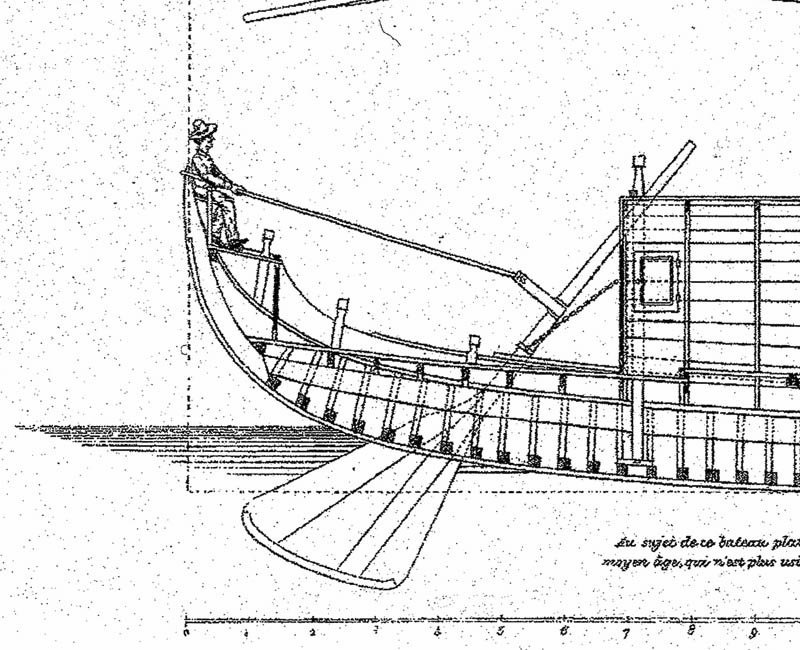
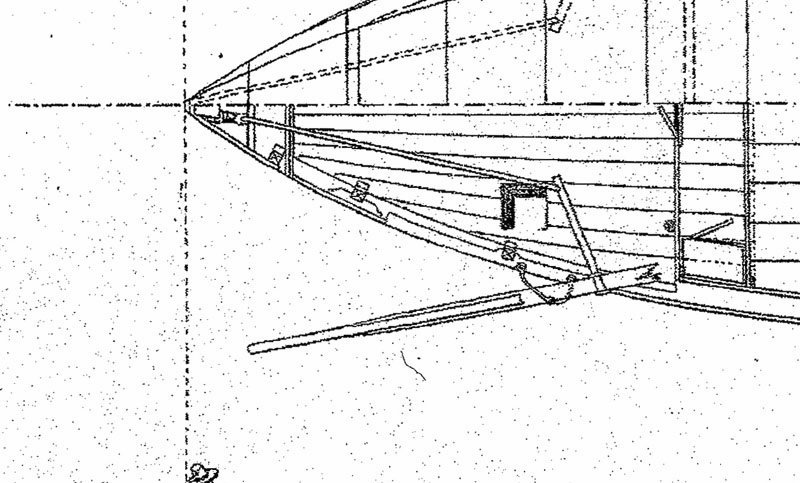
Cheers
Dick
- mtaylor, GrandpaPhil, Cathead and 5 others
-
 8
8
-
Thanks, Steven and Thukydides. The occy is tentacles forward in attack mode so as to intimidate the villagers as the ship roars in. The croc adds to the menace. The mycenaeans were generally not all that nice. They were,after all, pirates.
Dick

- GrandpaPhil, Louie da fly, Thukydides and 1 other
-
 2
2
-
 2
2
-
I have never been happy with the figurehead which appeared cartoonish. So I have gone back the original potterry images and found this excellent image of the tragana ship
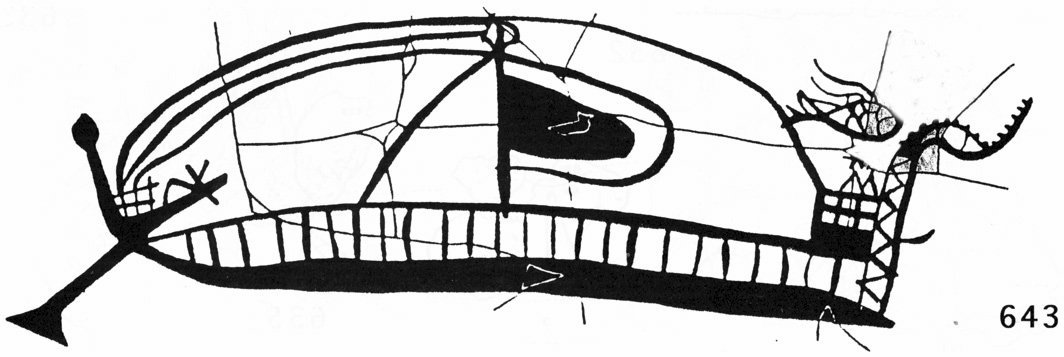
The figurehead I couldnt recognise until I suddenly realised that it was in fact a stylised crocodile head with projecting teeth.. I also have done some nose art using an image of a minoan octopus which was much copied by the mycenaeans
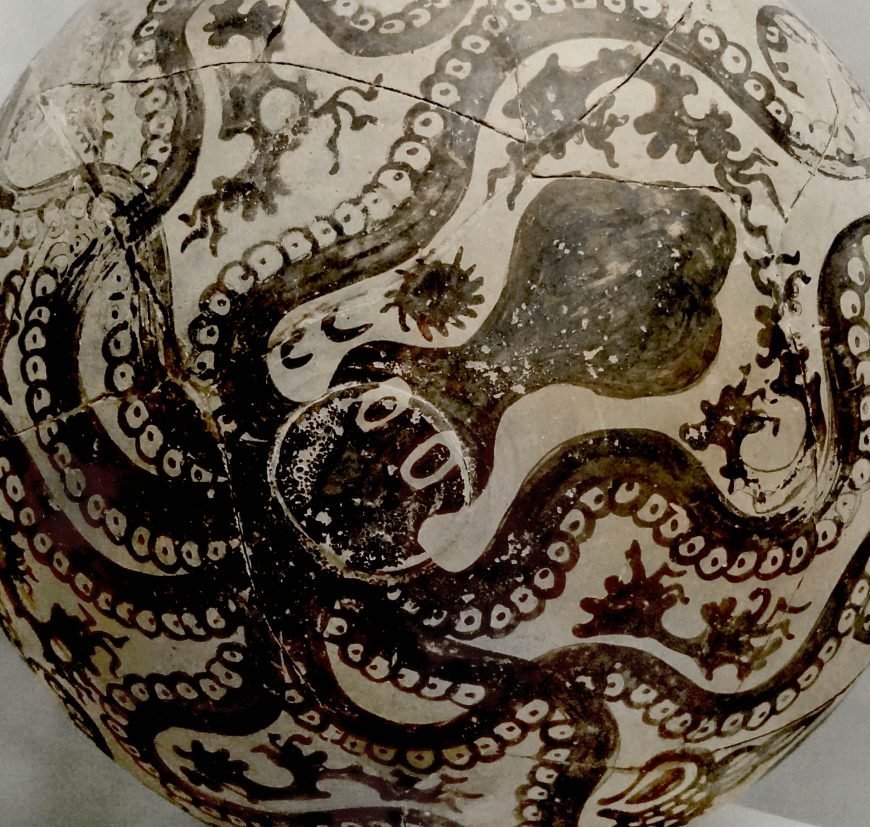
The octopus would be an appropriate animal for a ship of Poseidon
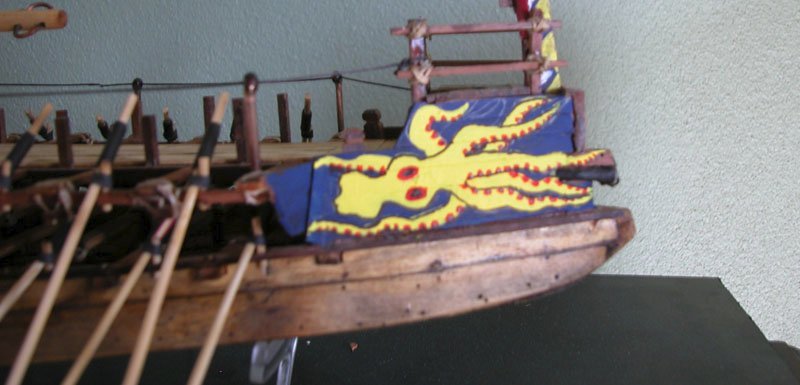
So the latest figurhead is much more threatening. The crocodile would be familiar to mycenaeans who regularly traded with Egypt.
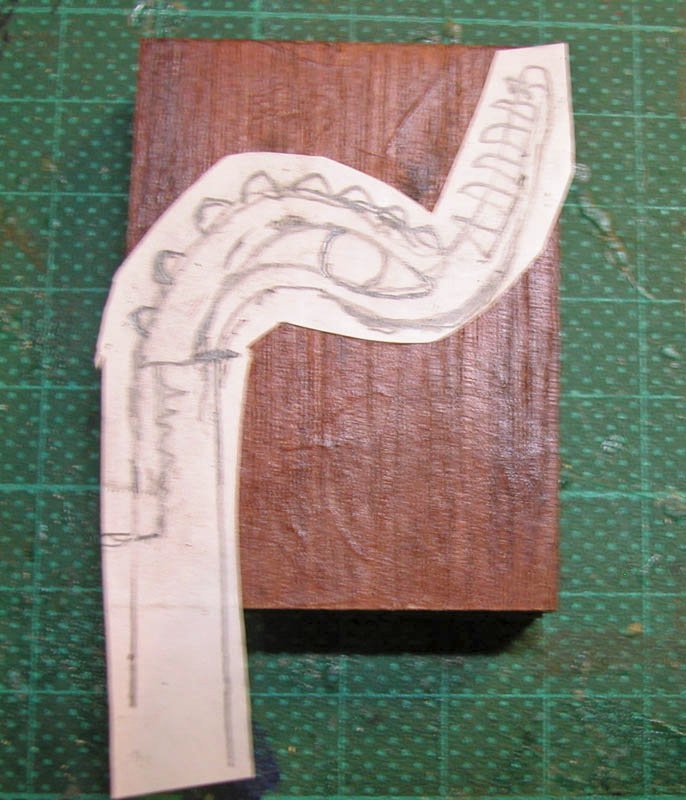
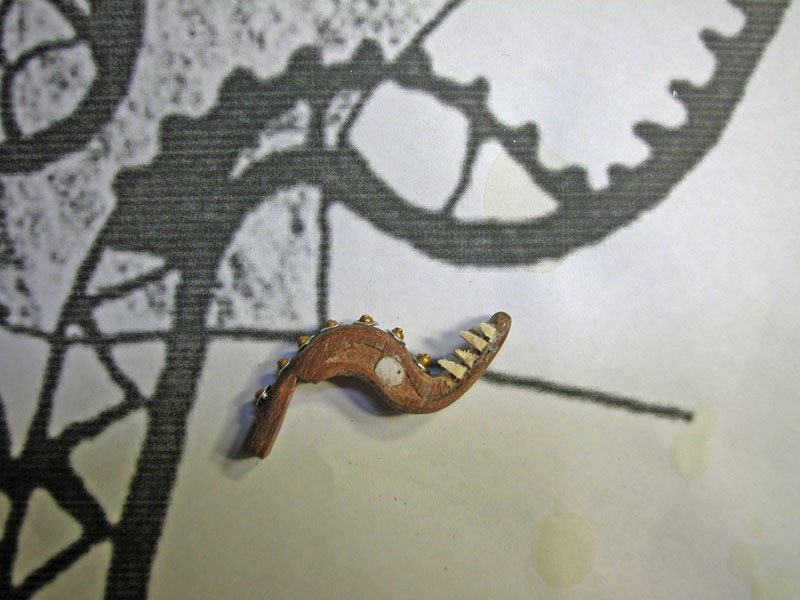
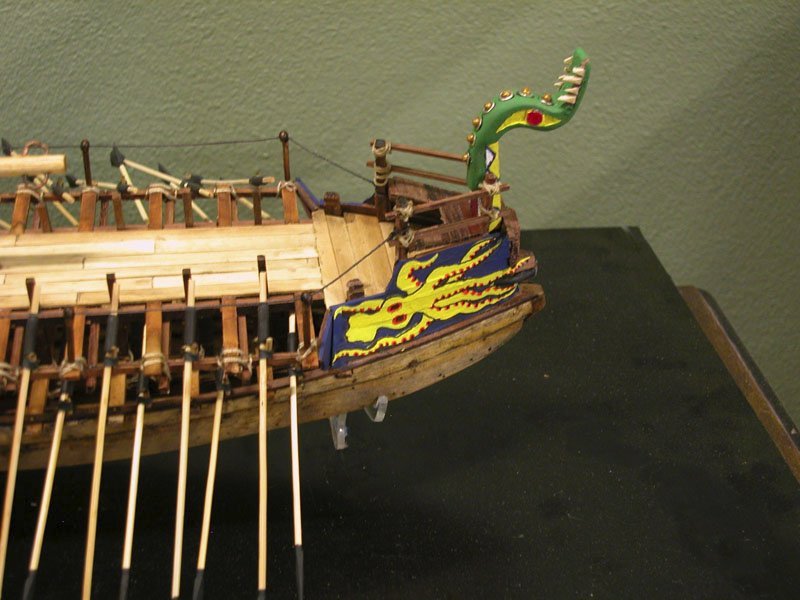
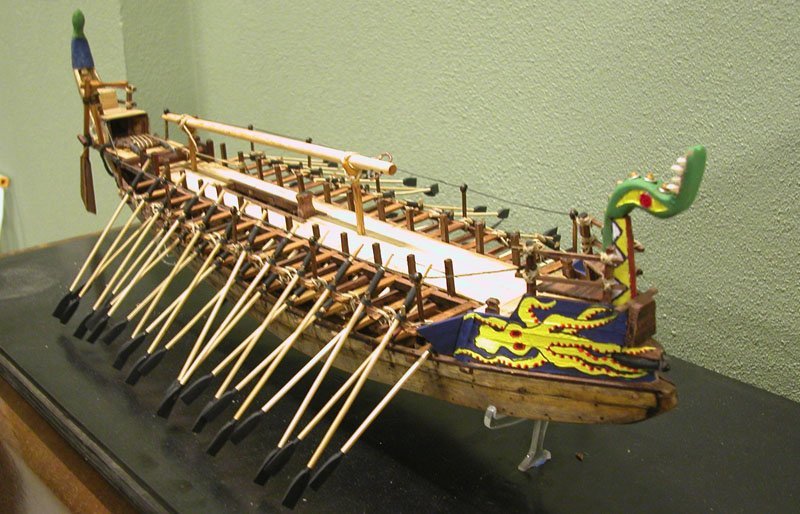
Cheeers
Dick
-
Thanks, Mark.I believe the planking in a gun deck of a warship would be oak. As this was a merchantman, I would think elm or fir. The thickness of the central plankage was of the order of 90 - 100 mm and the outer planking 70 - 75 mm. Other members may be able to give much more detail on plankage. It is said that the old forests of europe never recovered from the stripping that occurred to make the war armadas of the 16th to 18th centuries.
Cheers
Dick
- Mark Pearse, mtaylor and Stavanger
-
 3
3
-
The thick planking has been applied as far as the midline,
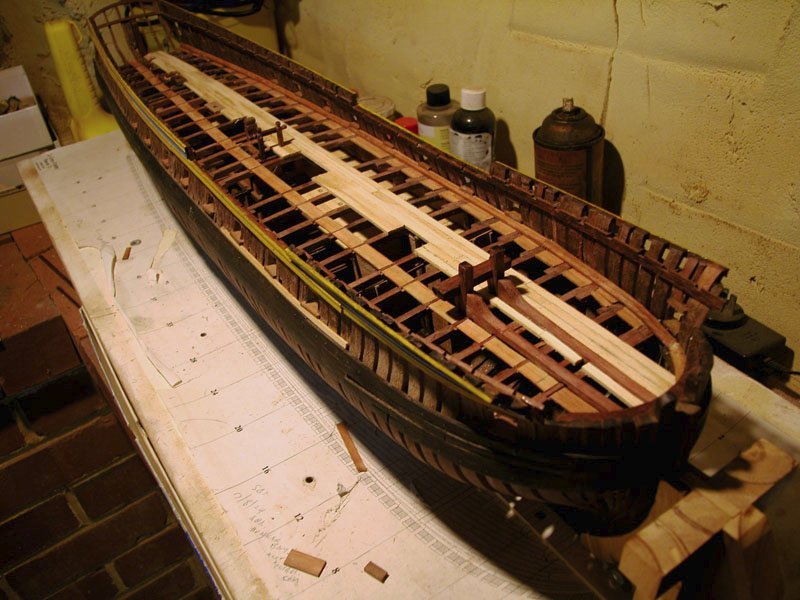
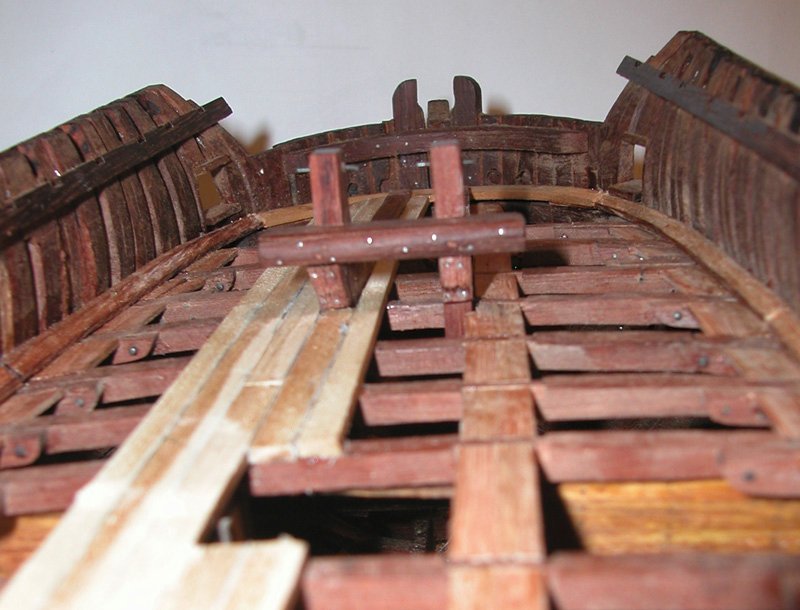
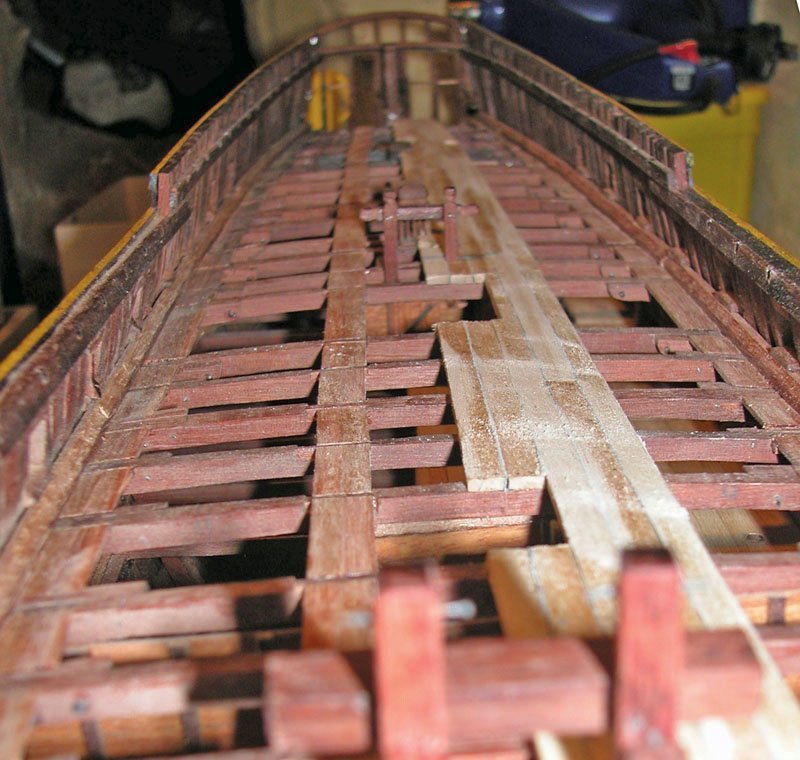
Dick
- scrubbyj427, davyboy, GrandpaPhil and 4 others
-
 6
6
-
 1
1
-
I have installed the waterways both sides.
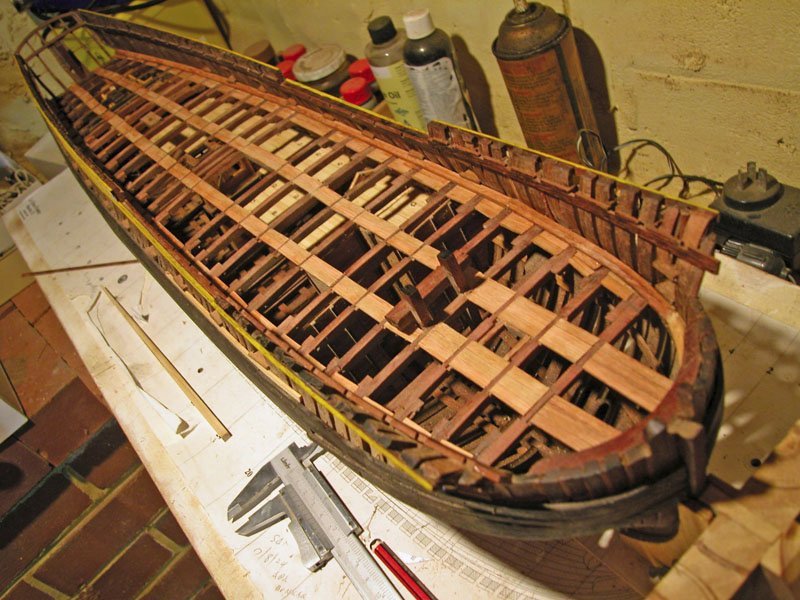
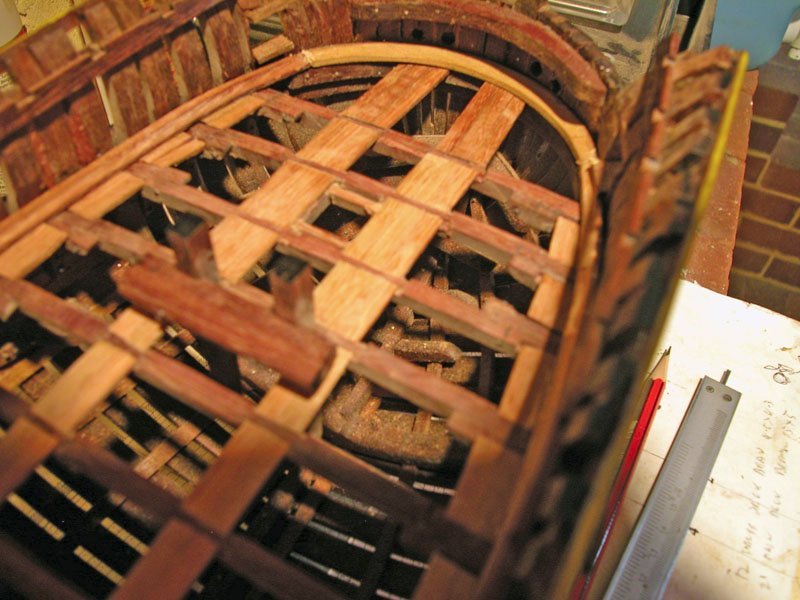
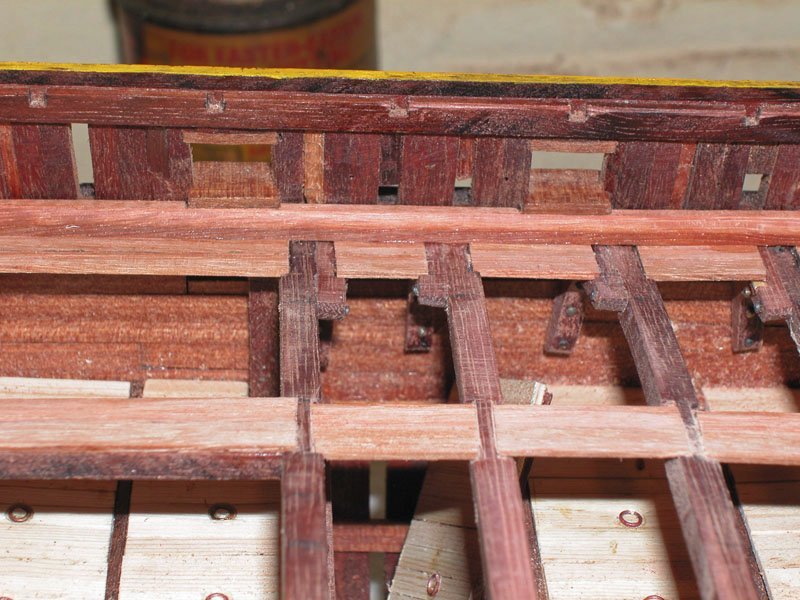
Cheers
Dick
- davyboy, scrubbyj427, mtaylor and 6 others
-
 9
9
-
This vessel did not have lodging knees but lodging planking, this would save money. Knees are made from grown compass timber ( this grain follows the shape of the knee) and for a humble merchant vessel would be expensive overkill. Hanging knees however were used and presumably grown.
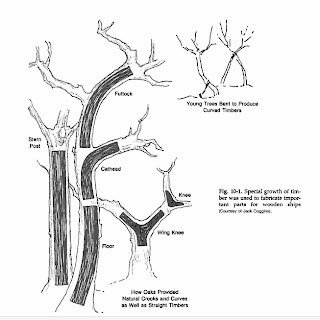
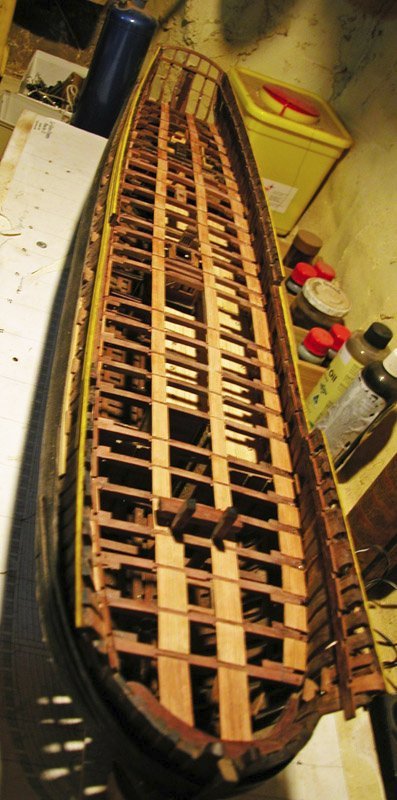
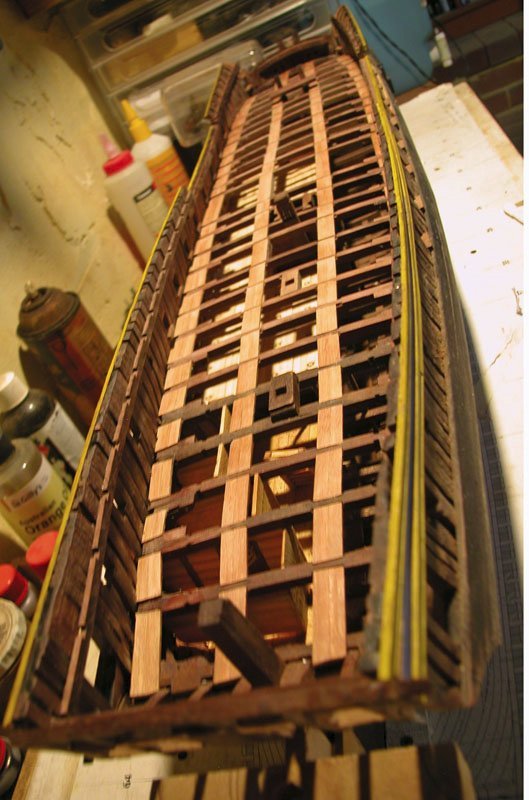
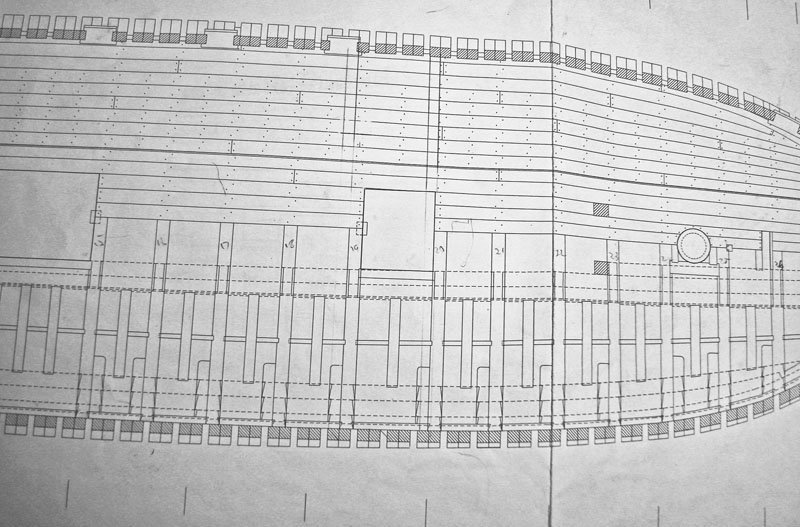
Dick
- mtaylor, KARAVOKIRIS, Stavanger and 7 others
-
 10
10
-
Thanks for showing us Kroum's Video, Steven. Very useful for future builds. Let's hope more preserved wrecks are found and that nondestructive visualisation of buried parts of the hulls and rigs can be achieved with further advances in technology.
Dick
- Louie da fly, Glen McGuire and mtaylor
-
 3
3
-
As long as the weight of the knees doesnt sink the ship by the stern!😎
Dick
- mtaylor, Louie da fly and Glen McGuire
-
 1
1
-
 2
2
-
This painting of the stern of Venezianos nave shows somewhat less substantial supports for the stern castle than yours but of course it doesnt project as much as yours either.
Dick

- mtaylor and Glen McGuire
-
 2
2
-
I have installed the main deck beams and hanging knees as well as installing the bitts and all mast partners. The plan is to leave the deck largely onplanked so as to be able to see the lower cabins and the false deck.
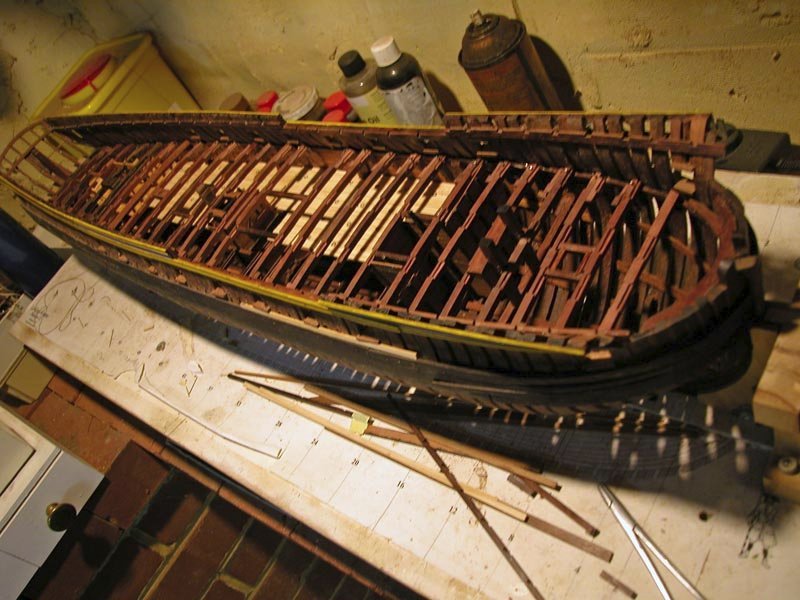
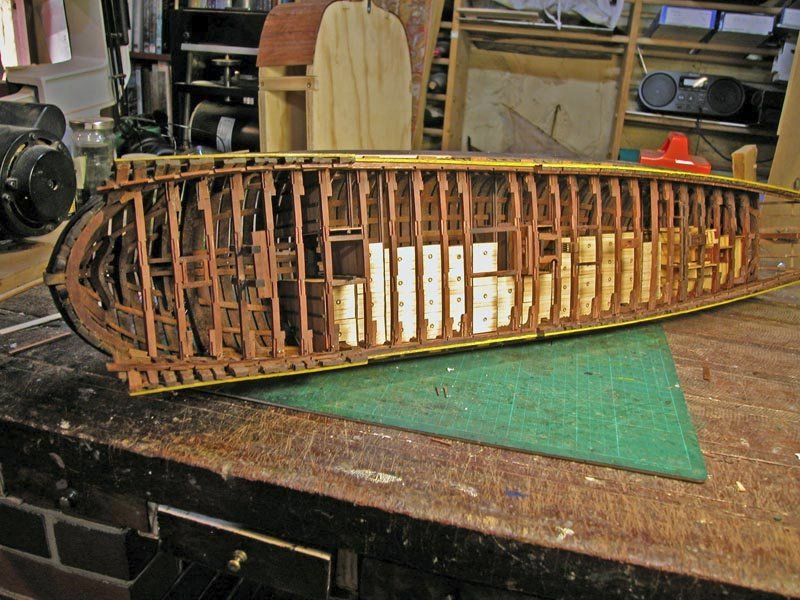
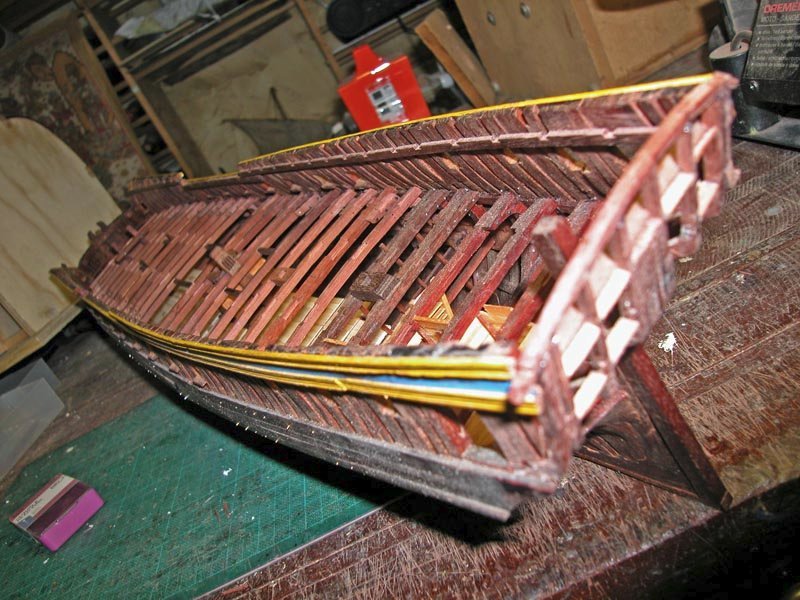
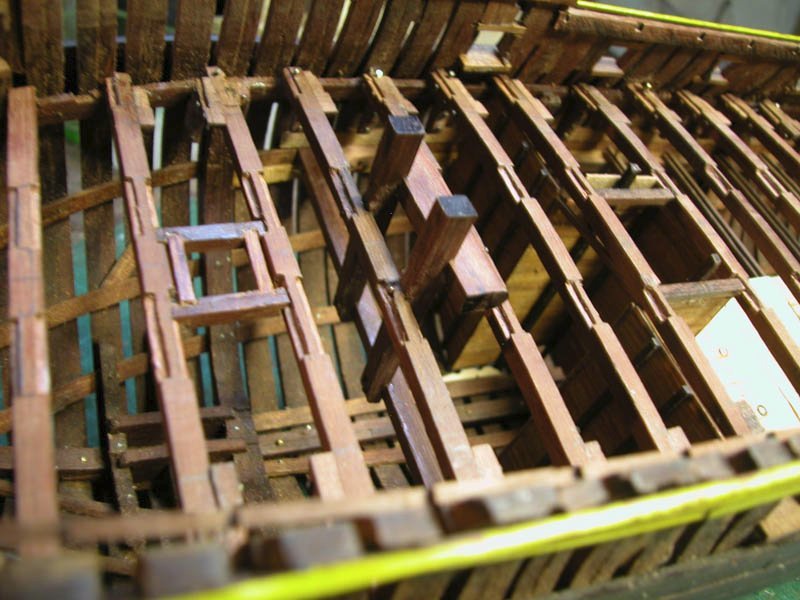
Dick
- CiscoH, Mark Pearse, GrandpaPhil and 6 others
-
 9
9
-
There is no doubt that loading ports on at least one side were used and are seen in a number of illustrations for example St Marks coffin being loaded through such a port. As Roger states, it would be ridiculous to set sail with a crenellated hull. I believe the artists sketched thes e ships in port so while loading. At sea the port would be covered to restore freeboard.
I took this into account on my round ship reconstruction by building in removable panels which could be rapidly removed and replaced.
I used Lillian Ray Martins book extensively as an excellent albeit fallible resource.
Dick
- mtaylor, GrandpaPhil, druxey and 1 other
-
 4
4
-
I agree with Baker. That black could be toned down with a light buffing, Here are some bangladeshi boats to show effects of wear on pitch,
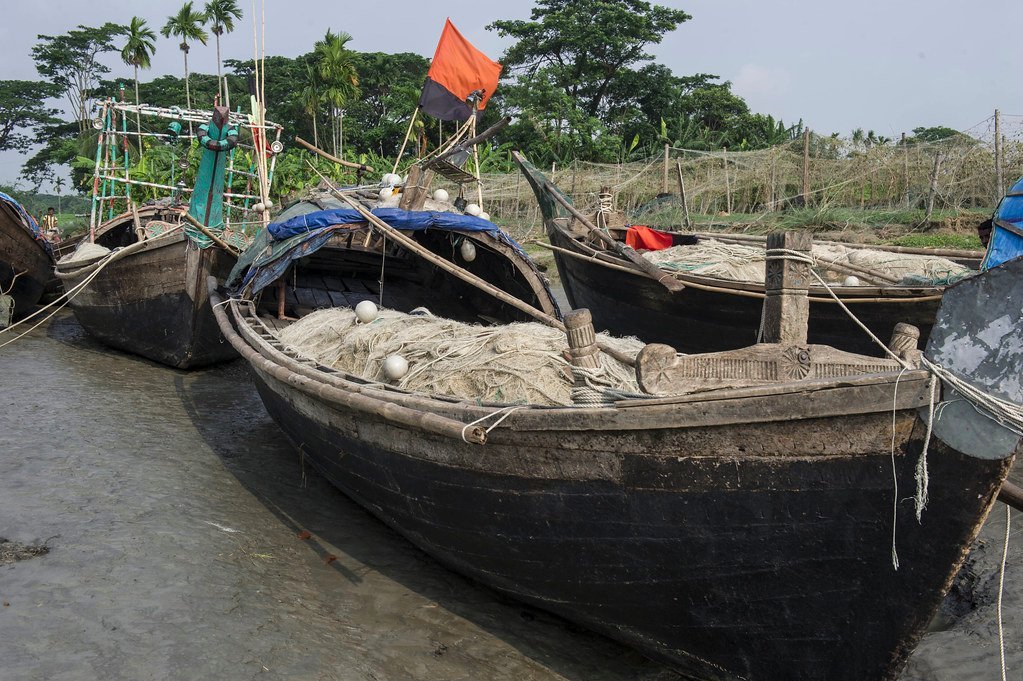
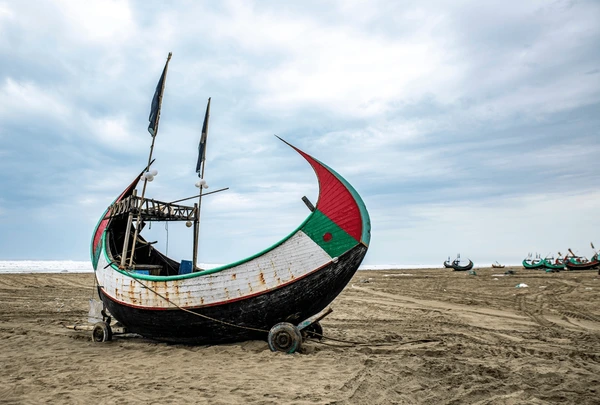
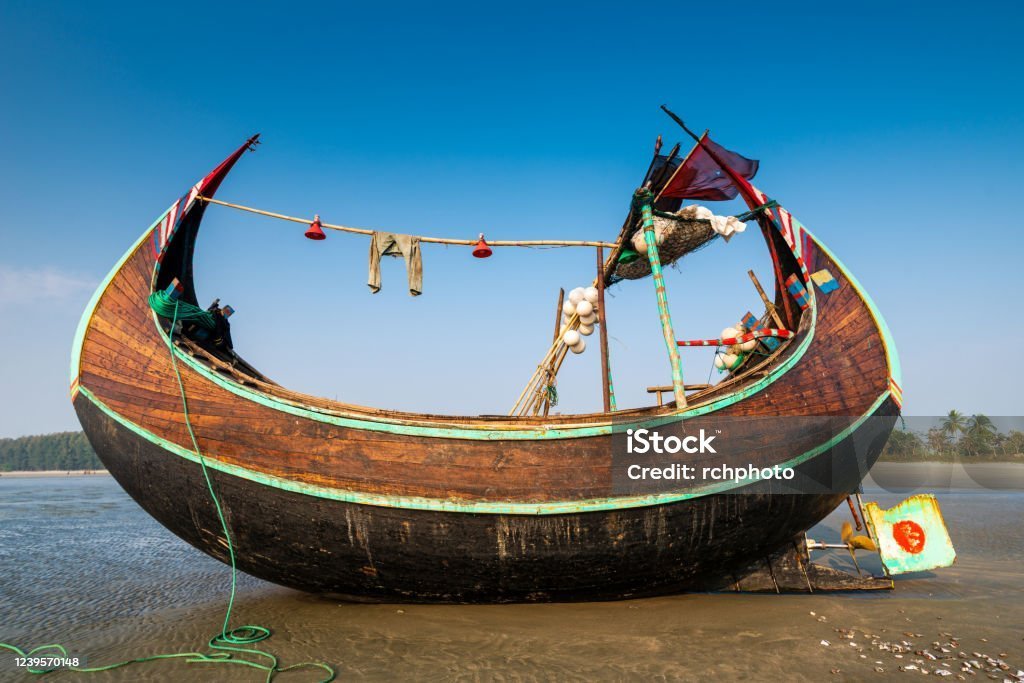
Dick
- mtaylor, tarbrush, Thukydides and 3 others
-
 6
6
-
The open area contained by the "brace" probably obviates the need for a hawse hole (not seen on the mosaic), do you think?
There is a bitt here which would serve. The mosaic also suggests that the "brace" and the curved stempost is rabbeted. Does this suggest that at times this area might be planked in as an anti splash cover?🤔
Dick
- mtaylor, BANYAN, Roger Pellett and 1 other
-
 4
4



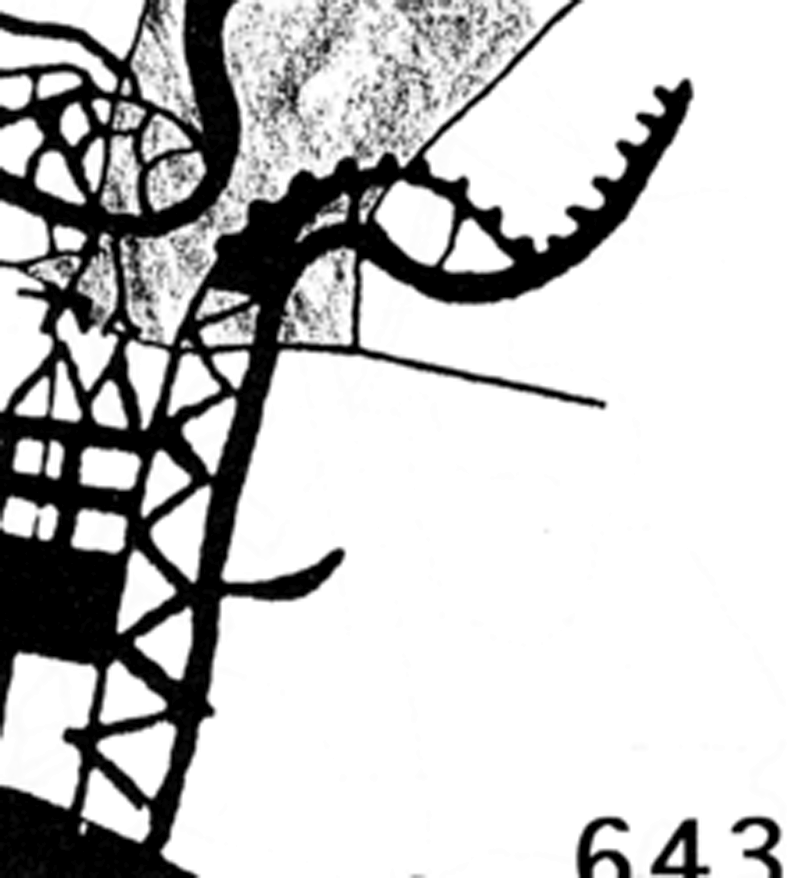
The San Marco mosaic ship c. 1150 by Louie da fly - 1:75
in - Subjects built Up to and including 1500 AD
Posted
Again I would disagree. This discussion, for that is what it should have been, bears directly on Steven's build and on the whole subject of mediterranean round ships. There is no doubt that there was a diversity of rigs extant in the Mediterranean during the period of the thirteenth through fifteenth century. This ranges from simple lagoonal and riverine vessels with latin rigs and quarter rudders right through to cog-like vessels and the later evolution of the nave quadra with the northern innovation of square rig and stern rudder. To anyone wishing to read an authoritative momnograph on this subject I would refer to the excellent publication: The art and archaeology of venetian ships and boats by Lillian Ray Martin , Chatham Publishing 2001 . ISBN 1-86176-173-2. This was a major resource for my previous round ship reconstruction.
I have gone back through the entire log of Steven's build and have extracted all the images which incontrovertibly show a quadrangular sail and looked carefully at all other supplied images for evidence of either square rig or settee rig ( a variant of latin sail in which the forward part of the triangular sail is truncated. This is seen well in dhows). Here are the images of square rig:
Dont know where this image comes from. This is a northern vessel with stern rudder. Note the reefing points (not seen on latin rig) and the foot of the sail tied into a bundle by the reefing points (See my hulc log for details). This is not a round ship and is probably northern european,
To show that latin rig when used on different points of sailing can simulate square rig, here is a section of the 14thC Cocharelli Codex which speaks for itself.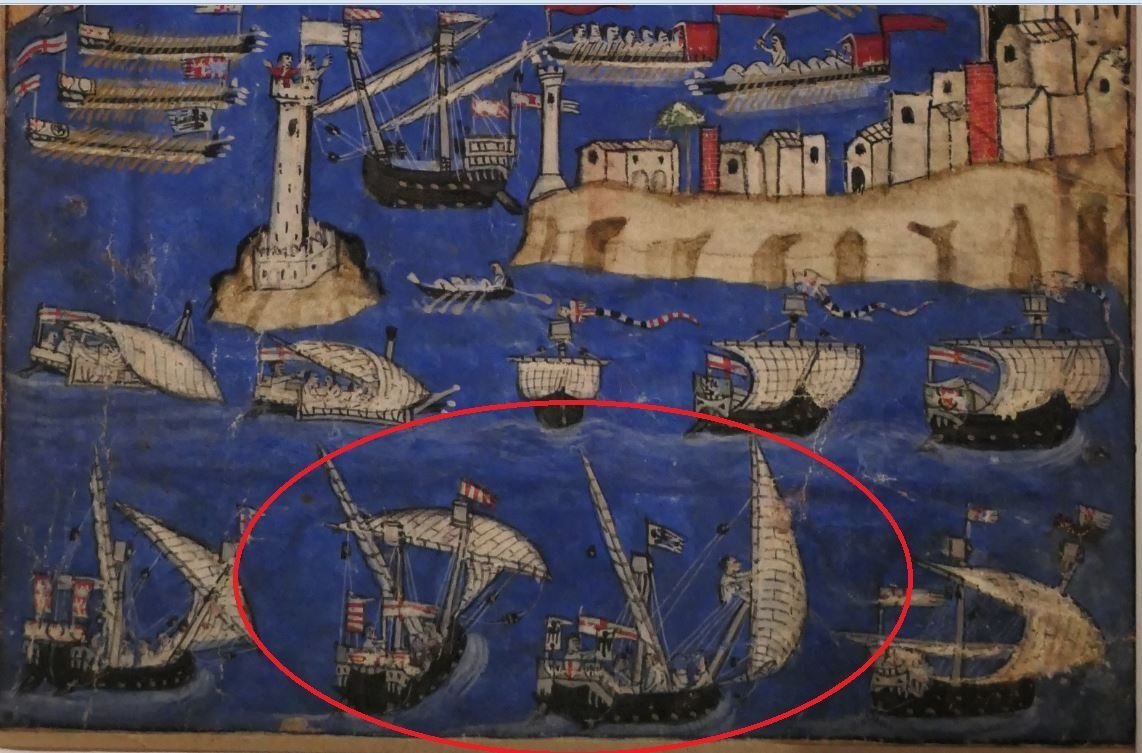
So, there is no doubt that settee rig and maybe even square rig was used alongside latin rig in the Mediterranean Middle Ages. But the overwhelming number of rigs were latin.
To quote the great Fred Dagg : 'I'll get out of your way now'"
Woodrat